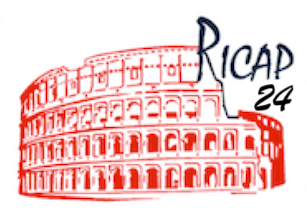Speaker
Description
Supernova remnants (SNRs) are likely to be significant sources of cosmic rays (CRs) up to the knee of the CR spectrum. They produce gamma rays in the very-high-energy (VHE) range. About a dozen SNRs emitting VHE gamma rays have been detected by current instruments and it is expected that many more will be detected by future instruments.
However, the details of particle acceleration at SNRs, and the mechanisms producing VHE gamma rays remain poorly understood. We studied the population of SNRs in the TeV range and its properties by confronting simulated samples to the catalog of VHE gamma-ray sources from the H.E.S.S. Galactic Plane Survey (HGPS) under consideration of the multi-dimensional detection threshold of the HGPS. This allows us to address fundamental questions concerning particle acceleration at SNR shocks. What is the efficiency of particle acceleration? What is the spectrum of accelerated particles? Is the VHE gamma-ray emission dominated by hadronic or leptonic interactions?
We present here the first systematic exploration of the SNR-population parameter space relevant to our model. We identify preferred parameter combinations for which $\gtrsim 90\%$ of the Monte Carlo realisations are in agreement with VHE gamma-ray data and exclude parts of the parameter space in contradiction with the HGPS data. One finding is a preference for large hadron domination (lower electron-to-proton fractions of $K_{\rm ep} \lesssim 10^{-4.5}$) in the SNRs, accompanied with a significant fraction ($\sim 50\%$) of leptonic gamma-ray emission in the sub-sample of detectable SNRs.

